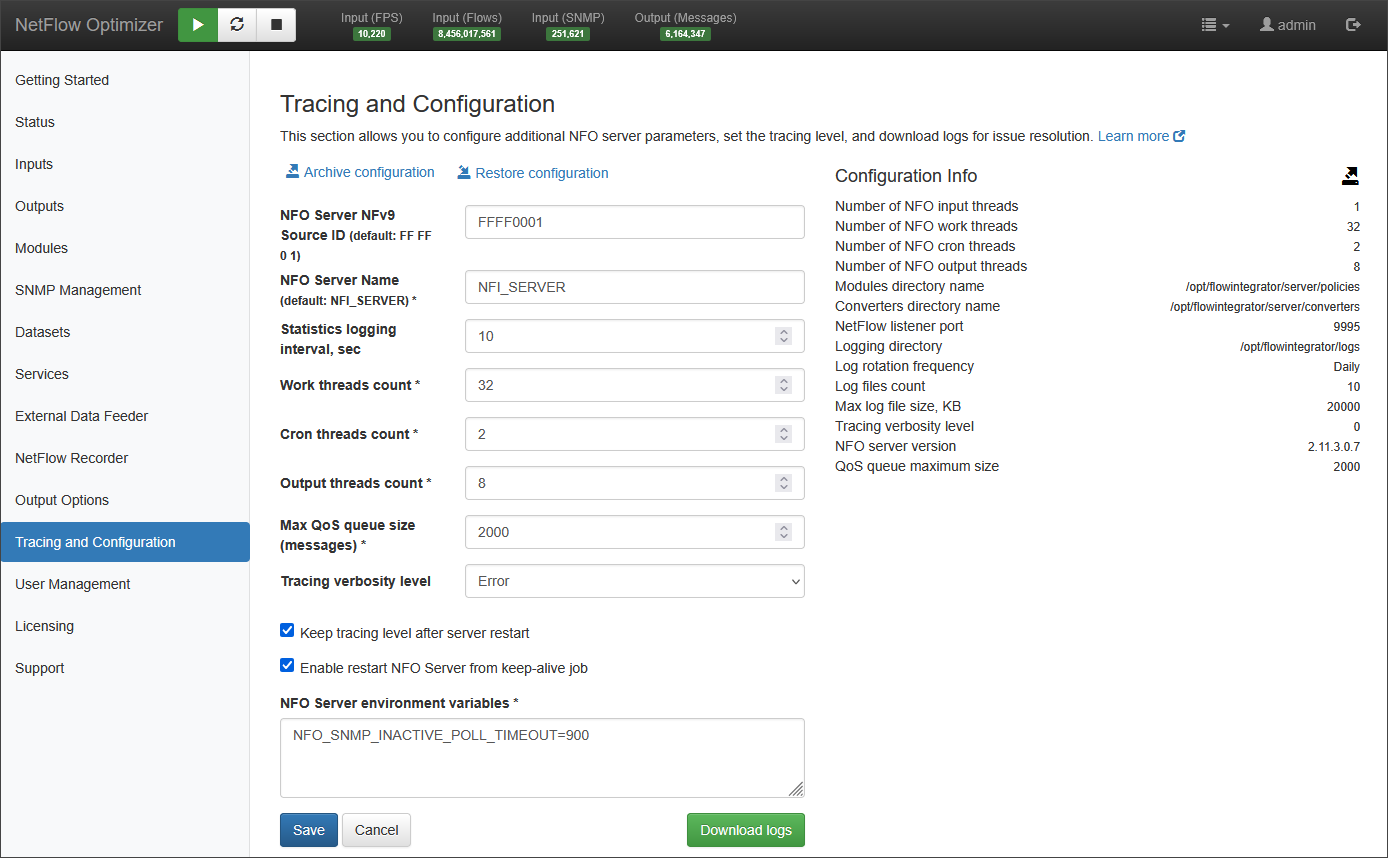Tracing and Configuration
This page allows you to configure additional NFO server parameters, set tracing level, archive configuration, restore configuration, and download logs for issue resolution.

Archive/Restore Configuration
"Archive configuration" zips all NFO configuration files and stores them on a local drive (the file name and path will be displayed). To restore the configuration, you need to move this file to your desktop (or any folder on your computer) and press "Restore configuration". This will open a dialog to upload the ZIP file. Note that for security reasons, we do not automatically save the zipped configuration to your computer.
Parameters
- NFO Server NFv9 Source ID: a unique identifier used to distinguish the NFO server when it forwards NetFlow v9 messages. This ID is included in the header of every NetFlow v9 packet generated by NFO.
- NFO Server Name: a unique, user-defined name to the NetFlow Optimizer (NFO) instance.
- Statistics logging interval: specifies how frequently, in seconds, the NFO's operational statistics are logged and refreshed on Status page.
- Work threads count: specifies the number of parallel threads that the module uses to process incoming data. Increasing this count can improve performance by allowing NFO to handle more data concurrently.
- Cron threads count: specifies the number of parallel threads dedicated to executing scheduled tasks (cron jobs runniing at the end of data collection intervals).
- Output threads count: specifies the number of parallel threads that the module uses to format and send data to configured outputs. Increasing this count can enhance the throughput of data leaving the module, which is particularly useful for handling a high volume of output data.
- Max QoS queue size (messages): sets the maximum number of messages that the Quality of Service (QoS) queue can hold. When this limit is reached, any new incoming messages that are subject to QoS rules will be dropped. This parameter helps prevent the system from becoming overloaded by limiting the amount of buffered data.
- Tracing verbosity level: this drop-down controls the amount of detail included in the NFO's log files. A higher verbosity level provides more detailed information for debugging and troubleshooting, while a lower level reduces log volume for normal operations. The logging levels are (from least to most verbose): Error, Debug, Verbose, Flood.
You can also set NFO environment variables here.